Your Backyard Wildlife Habitat: An Introduction
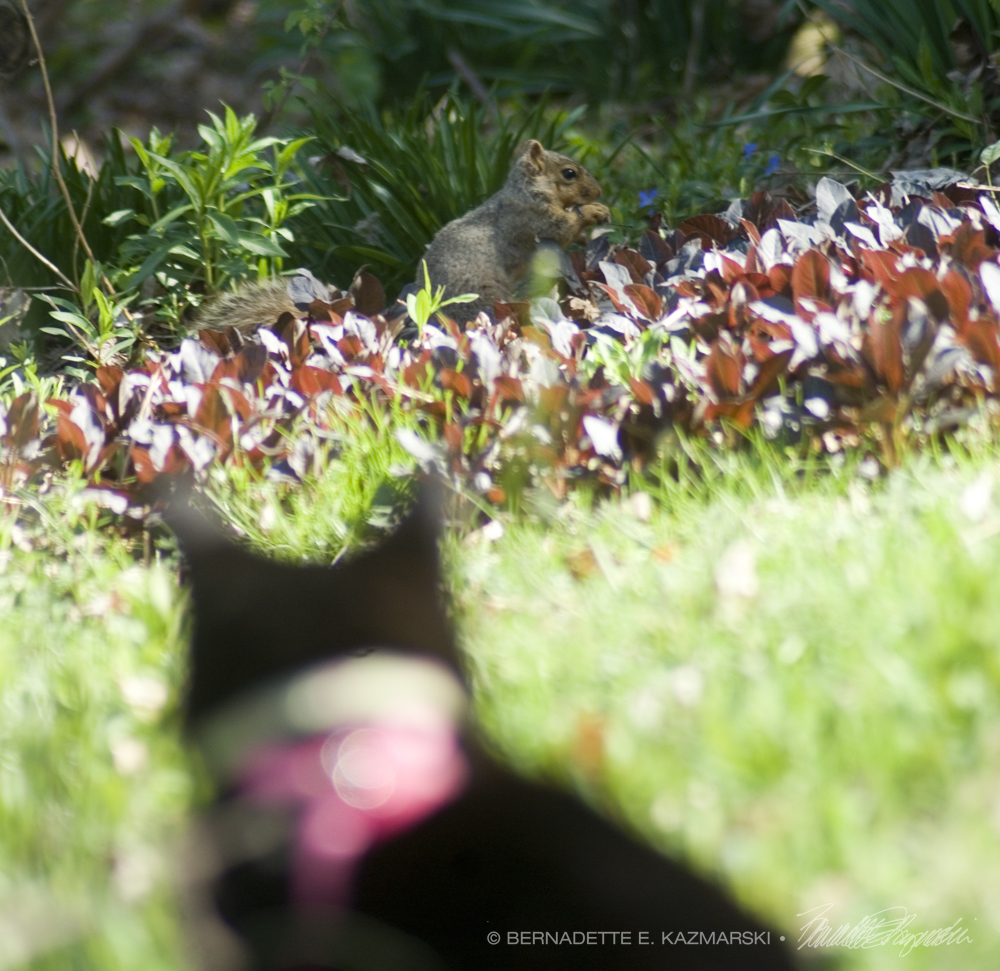
THIS IS THE first in a series of articles on building your backyard wildlife habitat and explains just what this concept of providing a bit of habitat for our wild friends to live not only for their benefit but for us as well, and the greater ecological world around us. There are no rules for a backyard habitat because the plants and animals and birds and insects and so many other living beings who live around us are different all over the country and all over the world. What we do is find what’s near us, and find a way to provide food, water, shelter and a safe place to reproduce and raise young. Often inviting this mix of natives reduces the need for controls such as pesticides because in time they control each other and your space forms its own natural habitat. We can focus on species we have or those we’d like to attract and in the meantime we learn a good bit about the world around us that we may not have known before.
. . . . . . .
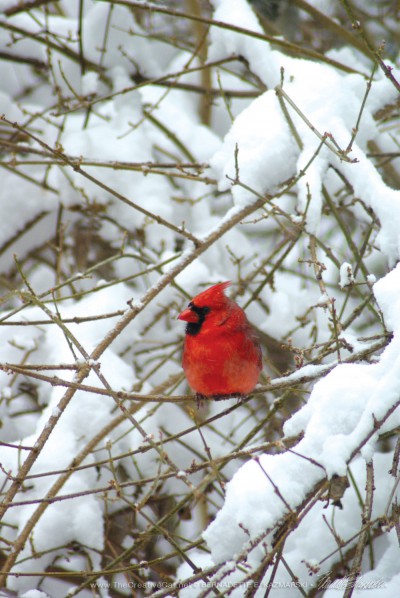
It started back in the deep of winter. At dusk a male cardinal, always the last to feed, sat on a branch in the bare lilac outside the north window, bobbing slightly in the wind, sounding his loud, hard “chip! chip!”, his color slowly fading to gray as the light faded from the day and light flurries softened the landscape. I don’t know if he’s saying “good night” or “thank you” or “can’t you turn up the heat” or if he’s not saying anything to me at all, but if I’m at my desk when dusk falls on a winter evening, the cardinal is outside, looking right at me, speaking his piece.
After dark I was in the back yard when the cloud cover parted and the moon, a little past full, shone on the light dusting of snow. The stillness of a bitter cold winter night can be unnerving, the sudden, slight rustle of dry shriveled leaves still hanging on your phlox can seem like a whispered conversation right at your elbow, and the sound of my rubber clogs crunching the snow was so loud I caught myself on tiptoe trying to minimize my disturbance to the night.
It was 11 degrees with a dusting of snow. I’ve no doubt I’ll see the thermometer drop a few more degrees before I decide I’m done for the day.
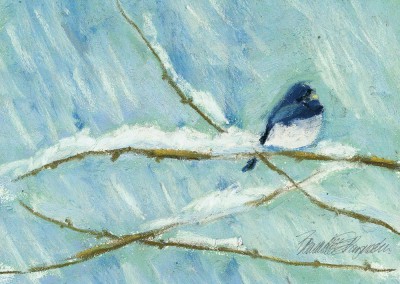
I think of the birds and bunnies and squirrels and the others who are supposed to be hibernating but I see their prints and sometimes see them, at this time of day nestled in their preferred night cover, keeping warm with a good day’s food and water in their bellies. I’ve inventoried the winter residents of my little back yard and taken care to provide winter cover and a good varied diet and water for them to drink.
I was outside gathering the plastic dishes, now full of frozen water, to be refilled and replaced outdoors in the morning. It’s part of the years-long habit of maintaining my backyard wildlife habitat.
And enjoying the experience of a cold winter night is as much a pleasure as a warm summer morning as I share the awareness of life in this little piece of wilderness, here in Backyard Wildlife Habitat No. 35393.
This topic has so much information that I’ve broken it into a series of articles. This is the introduction, and I’ll also be covering:
- how I established my yard as a habitat using my diagrams and plant lists as examples
- how to find information on native species in your area
- converting more of your lawn to vegetation
- moving toward non-chemical methods of yard maintenance
- feeding this, that and the other
- identifying birds in your area
- insect-eating residents: bats, spiders, toads, garter snakes and birds
Planning Ahead
If, like me, you keep a garden of flowers or vegetables or both, you’re probably already planning out your garden for the coming year—more on that below. And if you feed birds summer or winter and have an awareness of other flora and fauna in your yard and area, you might want to work a plan for a backyard wildlife habitat into this year’s garden, or you might find that you’ve already got the important parts and you want to enhance or start expanding it.
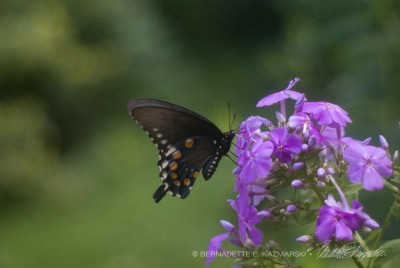
Just What Is a Backyard Wildlife Habitat?
It’s not turning your yard into a weed patch, as I’ve heard some people worry. It’s simply providing for the needs of your native species of flora and fauna so that they can thrive and reproduce.
Basically, if you have a bird feeder and bird bath, you or your neighbors have a few mature trees of various species and some dense twiggy shrubs or evergreens and flowering plants in your yard, you are providing for the needs of many species.
And not just for birds and mammals. You are also providing opportunities for growth and reproduction for plants and trees by allowing them to grow in an appropriate habitat, and, since they are pretty much stuck in one spot and depend on insects, birds and animals to reproduce and spread their seeds, you’re providing that as well by attracting the birds.
Insects use plants for food, nesting and reproduction, and birds and other species such as bats eat insects. It all works together.
You can build on this basis and provide specific native plants that flower in various seasons, not just summer, you can feed all year, provide nesting boxes, leave the plants in your garden through the winter, and so on, each action providing more and more for your native species.
The concept is really not any more complicated than that. I had mine registered through the National Wildlife Federation in 2003 after I had spent a few years doing an inventory of all that was here and adding and arranging things until I felt it was ready.
Today I see information on these habitats in garden centers and birding stores and organizations, at the zoo and through local environmental organizations. I’m glad to see it’s so readily available and easy to understand, and especially that many schools are using backyard wildlife habitats as learning tools.
You can go as far as you want with it, and if you stay with bird feeders and bird baths and the right kind of shrubs and native plants to provide cover, nesting sites and nesting materials, you are providing a great service to your local area in helping to preserve your native species.
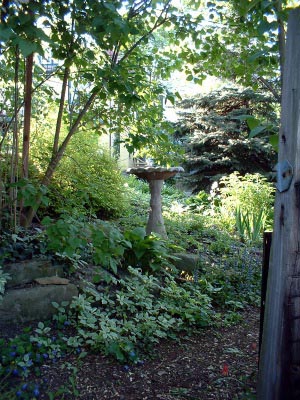
The Eco-system
Nature finds a balance that allows all species within a given area to thrive. That area can be your back yard, or it can be an entire geographic region in which the plants and animals that depend on each other for their basic needs all tend to live together in balanced numbers.
For instance, American Goldfinches depend on milkweed, thistle and other plants with energy-rich seeds and downy fluff in flowers or seed parts for nesting material and food to the extent that they don’t nest until midsummer when these flowers are finished blooming and going to seed. They use the down to line their nests, and their young are fledging and they are about to migrate when the rich seeds are mature, and they feast on the seeds, leaving on their migration when the local seed heads are just about spent. Birds migrate by day length, not food supply, so unless there is a shortage in seeds it just works out that it’s time to go at about the time the thistle are finished.
I have managed my yard organically since I moved here 19 years ago. I have my share of insect pests but they never get out of control, and I think it’s because the resident birds take care of them. I may see a cluster of aphids on the top of a broccoli plant in the morning, by evening they are gone. When the blue jays find a tomato hornworm, they drop everything and have a Hornworm Festival, tossing it from one to another all day. I feel bad for the poor thing, but I’d feel worse if it laid its eggs and infested my precious tomatoes!
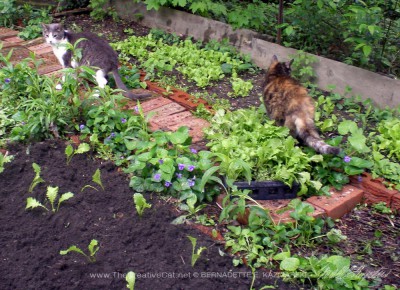
I’m happily planning out this year’s garden and I would bet those of you who garden and manage a habitat in your backyard are as well, so it’s high time to consider design and layout for this and your backyard wildlife habitat for the coming hear…and remember those sweet summer mornings in the garden with my feline companions.
Design to include pest control
Ick. Slugs. Everywhere. And they weren’t drowning in my beer traps, they were having a pool party and getting the munchies later.
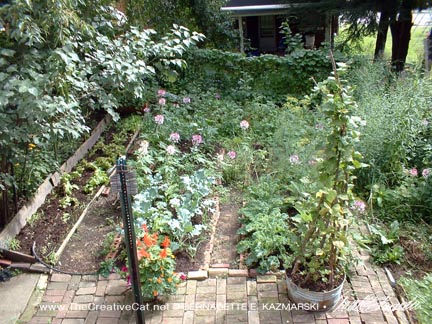
When I first established my vegetable and flower beds in this yard, I used a number of ingenious methods of “clearing” soil to save time, much of which involved newspapers or other waste papers (those wide computer printouts from the old dot-matrix printers, for instance) covered with straw or wood chips, which I could get for free by the truckload from a friend with a tree service business. This layering killed off the grass and softened up the soil for easier tilling or hand-turning, kept the soil moist in the heat of the summer, and also became a convenient way to set up paths between the beds and walking paths.
The second year, I used some of the same methods to mulch the beds around my plants, and added the brick patio and brick edging on my raised beds.
The third year, slugs ate all my seedlings as soon as they came up. I had created the perfect breeding ground for slugs in the damp soil under all that paper and bricks. I had to get rid of the slugs or trying to grow vegetables and flowers was senseless, but I liked my brick paths and mulching. With my feline garden patrol I certainly couldn’t spread slug bait all over my garden and flower beds.
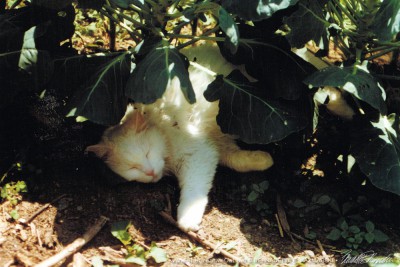
Carrying an armload of my trusty copies of Rodale’s Organic Gardening and all the books I’d purchased over the years to learn the various techniques of raised beds and drip-irrigation and composting along with organic pest control out to the garden, I tried every trap in the book—in all the books.
None was effective, even in combination. I was spending way too much time trying to kill slugs. Perhaps I should just whack them with the big heavy gardening books. Time to look at an alternative.
At about this time, introducing or attracting predator species became a possibility for home gardeners. This was practiced on organic and some conventional farms, but an entire field is a little easier for predators to find and inhabit than a row of green beans in your backyard. So, we just had to work a little harder.
Now, what ate slugs, aside from people who called them escargot? Nope, ducks and chickens were out in my community, so it actually looked as if I needed some sort of amphibian or reptile. Well, that would go over big with the neighbors. The neighbor kids would think it was cool, though.
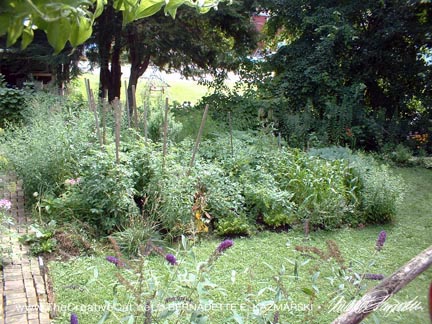
But I didn’t need a big amphibian or reptile, something inconspicuous would do the job. A garter snake! I studied the sort of habitat a garter snake would need but this was early in my backyard’s career, and I had very little groundcover that a garter snake would enjoy.
How about a toad? I have a friend who has a farm and one big puddle in their driveway produces legions of toads every year. We managed to catch two, and I let them go in the garden near one of the three the little toad abodes I had carefully prepared for them. I know that at least one stuck around because I saw it now and then, that year and the next, though it apparently didn’t use any of the abodes I had set up. I didn’t care because the number of slugs slowly decreased.
I also used a variety of methods related to me by long-time gardeners at my nearby Agway which included using copper to zap slugs—on researching I discovered that copper transmits through the slug’s slime and gives them a good zap, not killing them but certainly repelling them. A friend’s father had saved miles of copper wire which I used around small beds and surrounded certain plants with circles of pennies, both of which worked as long as the wire and pennies weren’t covered up with mulch or leaves.
Decide what you want in your habitat, and learn about it
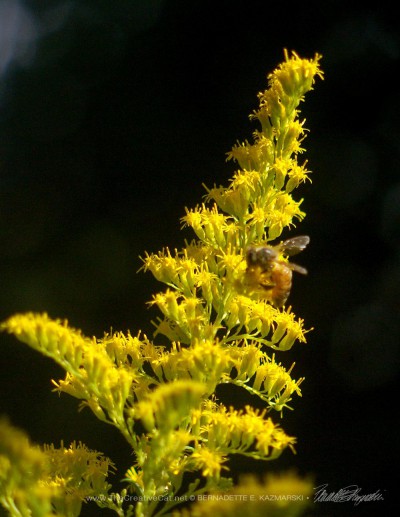
This, again, was several years before I declared my backyard a wildlife habitat, but it was my first real lesson in working with the system. I hadn’t ever used chemicals, but I was out there trying to use human methods to trap or kill some overburdening pest and hadn’t had any major infestations. Here I had learned about how nature keeps things in balance, and after seeing how well it worked it became my first line of defense and, ultimately, what led to developing my habitat.
You may not be concerned with slug eradication, but you may want to attract Baltimore Orioles, or monarch butterflies, or bats to take care of your mosquito problem, and you always want to attract pollinators like honeybees. The steps to do that are to find out what the species needs and prefers, then to determine how you can add those features to your habitat.
Enhancing your habitat
Consider birds, the most obvious fauna of any habitat. Nesting birds will arrive in the spring, eat, build nests, raise families, eat some more, then migrate South to be replaced by migrating birds coming from farther North. Each group of birds has slightly different needs, as do birds while they are migrating. You may provide for all groups and not even know it.
They all need:
- cover for protection from predators
- sleeping areas
- food for themselves as adults
- a ready supply of fresh water
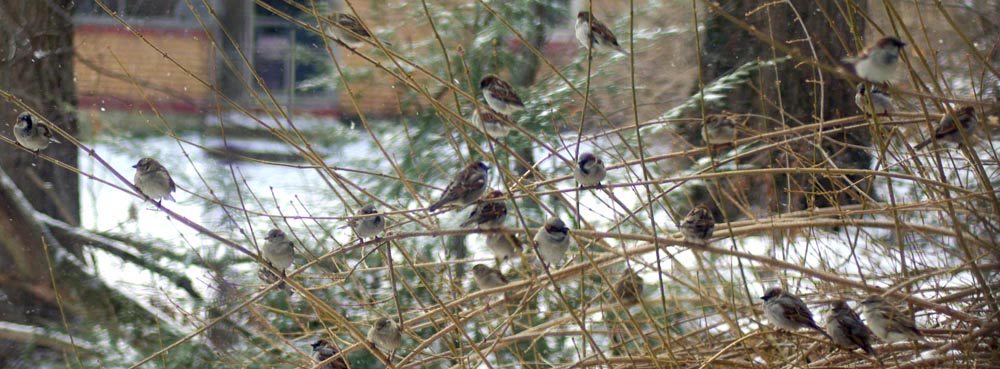
You’ve got some brambly shrubs like climbing roses, viburnum and forsythia that provide cover and protection from predators, a spruce where plenty of birds can sleep at night, you put out seed in the winter and you keep your birdbath filled.
In addition, nesting birds, spring through late summer, need:
- nesting materials appropriate for their species
- food for their young during nesting time
You’ve left some grasses to grow a little taller, tossed out some old yarn and dog hair for nesting material, and you have loose soil in all your garden beds where parent birds can find goodies to feed their nestlings.
Migrating birds, late summer through early autumn, need:
- easily accessible, high energy food
- easily recognizable cover for resting overnight
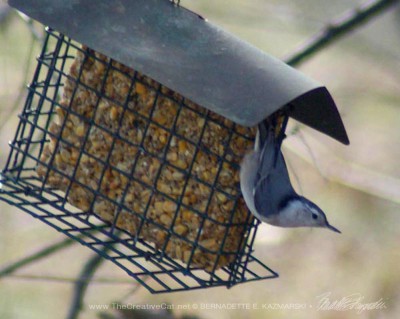
You put out seed and suet in September keep your birdbath filled, and birds can spot that spruce a mile away.
Winter birds, which are migrating from further north, need:
- easily accessible, high energy food
- a ready supply of fresh water, even on freezing days
- cover for protection from predators
- protected sleeping areas
You keep your feeders filled all winter and also have suet, the dense shrubs are still in place and the spruce is still doing its job.
You are actually taking care of a habitat with all you’re doing now.
But you could generally enhance what you are doing by providing a variety of seeds in different feeders. Goldfinches like thistle seed, which is dispensed in a perforated bag or a feed with tiny little holes. Woodpeckers like the suet, but they love a mix of nuts in their seed and even some dried fruit. Press some peanut butter into the bark of a tree trunk for nuthatches. Chickadees, titmice and cardinals will stand in line for sunflower seeds.
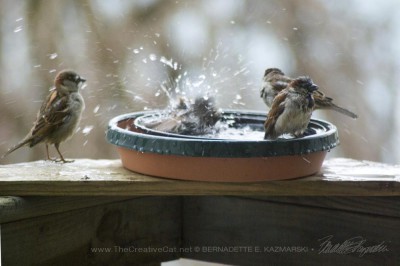
Also, don’t underestimate the need for water, especially in the heat of summer and the freeze of winter. In my yard in winter, the “winter birdbath” gets as many visits as the feeders. I put my concrete and clay birdbaths away, but use heavy plastic dishes like the bottom dish for a large flower pot or even a foil cake pan and fill it with hot water in the morning. I may fill it again later in the day, too, but I have several dishes and simply bring in the frozen one in the morning and put out a new one. Plenty of birds drink, and sometimes just sit near it for warmth. You can also purchase birdbaths intended for winter use or coils or other devices that keep the water from freezing.
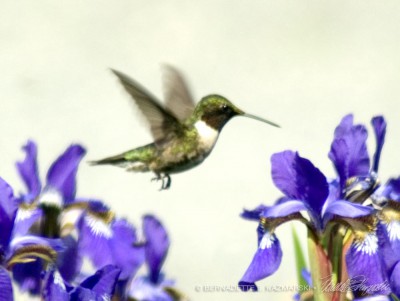
What about other species?
In the same way as the list above, choose your species and determine what its needs are in all seasons it would appear in your habitat. A few examples:
You practically stand on your head to get hummingbirds to visit your habitat. With their long slender beaks, hummingbirds can reach nectar in the bottom of a tube-shaped flower, but they will also eat from other flowers and are famously attracted to red, orange and pink flowers, such as geraniums and petunias. Consider planting some perennial phlox and adding hanging baskets of red petunias along with your hummingbird feeders.
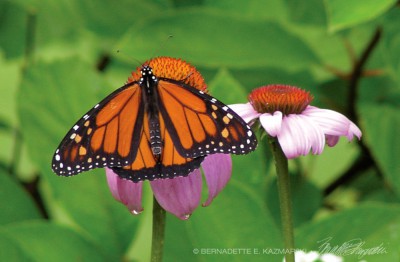
You would celebrate the day a monarch butterfly visited your habitat, but you’ve never seen one though you see plenty of other butterflies. Monarchs center their diet around milkweed, feeding from the flowers, laying their eggs on the undersides of the leaves, and, later, eating the leaves in various life stages. You may not be able to grow milkweed in your back yard, but before milkweed blooms and after it is done blooming they will eat from plants that have clusters of small flowers such as lilac and butterfly bush or composites such as Echinacea and black-eyed susan.
And the bats to take care of those mosquitoes? Try also attracting other night insects—keep a light on to attract moths and plant fragrant night-blooming plants such as evening primrose and heliotrope. The bats will find the abundance and variety of insects and move right in. They also have the same needs as birds and other animals in shelter and water. Bats are extremely sensitive to chemicals, so don’t use any in your yard, including fertilizers. And keep your cat inside.
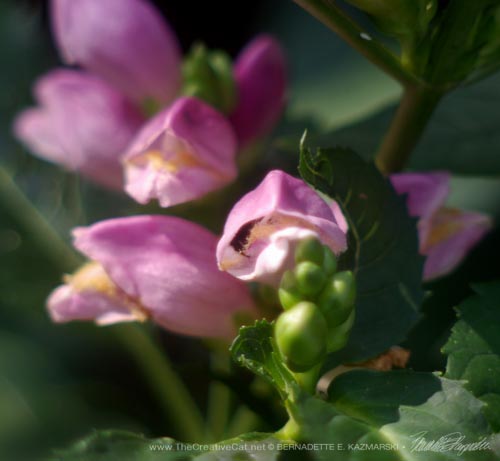
And I finally got that garter snake to move in when I let the grass and a ground cover called purple-leaf wintercreeper grow all along the fence next to the slope that I’ve let grow wild, so if you want a little snake to eat slugs and catch lots of insects, lit some dense groundcover grow undisturbed.
Other enhancements
Generally, reduce your lawn to a minimum because it’s just not useful to wildlife—it doesn’t provide food or cover, and in fact leaves most species vulnerable. Surround your grassy area with groundcovers, flower beds, and shrubs so that wildlife can quickly take cover if need be, or manage your lawn so that it grows longer and includes native plants instead of just grass.
Put your food and water features near or even in the planted areas. Don’t put the bird feeder in the middle of a grassy yard because it will leave too many birds vulnerable to predators, though it will make it more difficult for the squirrel to get to it. Of course, you want to see all this wildlife that you’ve attracted to your habitat, so don’t hide it in the woods, either.
Consider a pond so that ground-dwelling species can drink as well, and you can include some fish and water plants.
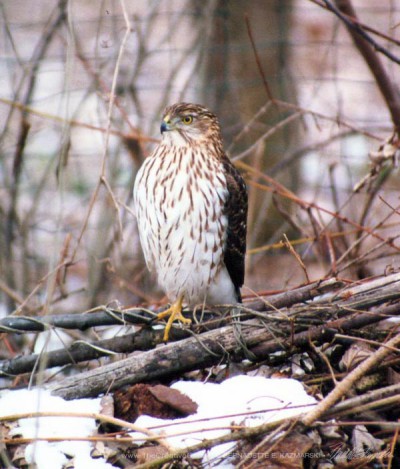
And minimize and eliminate your use of chemicals. Chemical smells mask the smells of food sources for wildlife, and those that come in contact with it will absorb it through their skin, paws, claws or even mouth and nose. My grass is only about half grass because I let grow whatever wants to, but it’s always green because the plants are hardy. I’ve also discovered that all the residents in my habitat keep each other in balance and I’ve only had to use traps and soap sprays on the things that grow in pots on my deck.
Set up a brush pile or two in your yard as well. I use the trimmings from my roses and other shrubs, just piling them in corners for the rabbits and other small mammals to hide underneath, and even the birds take cover when the Cooper’s hawk swoops in.
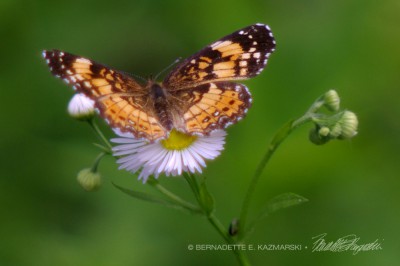
Try to stick with natives
Why native plants? We humans forget that every species on earth is not as adaptable as we are. Most species recognize only certain plants and insects as home and as food, but they aren’t able to make the judgment that other similar things may suffice if what they know isn’t available. Planting native species of flowers, shrubs and trees welcomes the species that are native to your area.
This doesn’t mean that non-natives are bad, only that they may not be recognized by all species as viable habitat. I have two huge forsythias directly under or near feeders, and they are constantly inhabited by the most adaptable birds—sparrows, jays, cardinals, chickadees—but I never see the oriole in them in the summer, or the woodpecker or blue bird. I often see them in the climbing roses and the mulberry and dogwood trees, however.
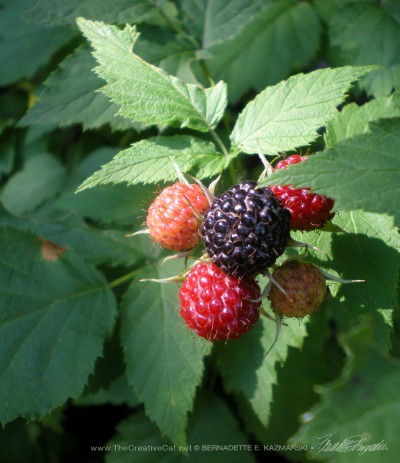
Good for wildlife, safe for your pets
Most of us are owned by companion animals, and they share this habitat as well, to some extent. Not all natives are safe for your pets, though, so this will narrow your list a bit.
But only a bit. Remember that foliage isn’t only for cover and nesting, it’s also for eating, and berry bushes and plants are universally loved by birds and all other wildlife, and perfectly safe for pets—if you don’t mind a few thorns on your raspberry and blackberry canes. Highbush blueberries are about the best you can do, followed by cranberry, huckleberry and a host of other local berries that grow in dense forms with not thorns.
Other shrubs providing food (to the birds, not you) and cover are most viburnums, native hawthorne and native juniper, all perfectly safe for pets and recognized by most species as home.
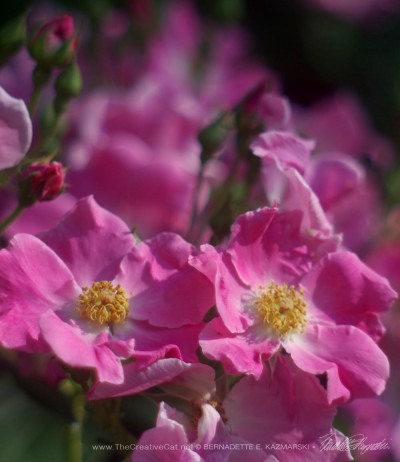
And good old roses, not the hybrids but your grandparents’ fragrant climbing tea roses, provide a dense cover for birds and other wildlife as well as food because many species visit the flower and birds eat the rose hips in the fall as they migrate.
For trees, most species of fruit trees have some toxicity about the bark or the fruit, but I haven’t seen a pear tree on any list, and various dogwoods are native all over the country. I have two mulberry trees and I had heard somewhere that it’s considered the “tree of life” because everything can eat from it, and indeed I’ve seen everything from goldfinches to the groundhog eating in the tree.
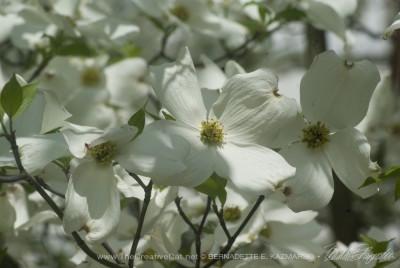
And for non-native species that most wildlife can live with, that old-fashioned forsythia and lilac can’t be beat. The species of spirea we use for landscaping aren’t really native to this continent, like bridal-wreath spirea, but they provide cover and are absolutely beautiful in full bloom. I have a variegated-leaf wiegela that small birds love, and hummingbirds visit the trumpet-shaped flowers.
But remember, a dog chasing your wildlife will not encourage it to stay, but most people don’t leave their dogs out all day long and the birds and bees learn to take off when they year the dog, returning when the dog disappears.
And it would be completely unfair to let a cat or two loose in your habitat. In photos of my habitat you’ll see one or two of my cats now and then, but they only go out with me, under my supervision—or rather, I’m under their supervision, but either way, they tend to stick with me, then I take them back inside. I can see what my neighbor’s cats do to my habitat, like little Mimi before I took her in.
A great online resource
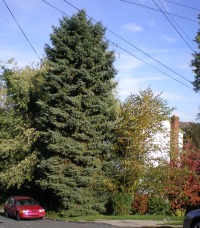
An overall resource for finding native species and answering a lot of questions is www.eNature.com. This will give you a start in finding your local native species of flora and fauna, though it’s not as specific as I’d like it to be.
And am amazing resource in finding indoor and outdoor plants that are toxic to dogs, cats and horses is on the ASPCA website at http://www.aspca.org/pet-care/poison-control/ under both “17 Common Poisonous Plants” and a hugely comprehensive list of over 400 plant species in “Toxic and Non-toxic Plants”, which even has photos.
Good luck with your habitat
Get out that graph paper or that garden design program and take these long cold nights to dream of your summer garden!
Read the entire series of introductory articles:
An Introduction to Backyard Wildlife Habitats
What’s in Your Backyard? The First Step in Planning Your Backyard Wildlife Habitat
What Else is in Your Backyard: The Fauna That Fill It
Bringing it All Together: Enhancing and Developing Your Habitat
And read through the series of seasonal articles on Your Backyard Wildlife Habitat.
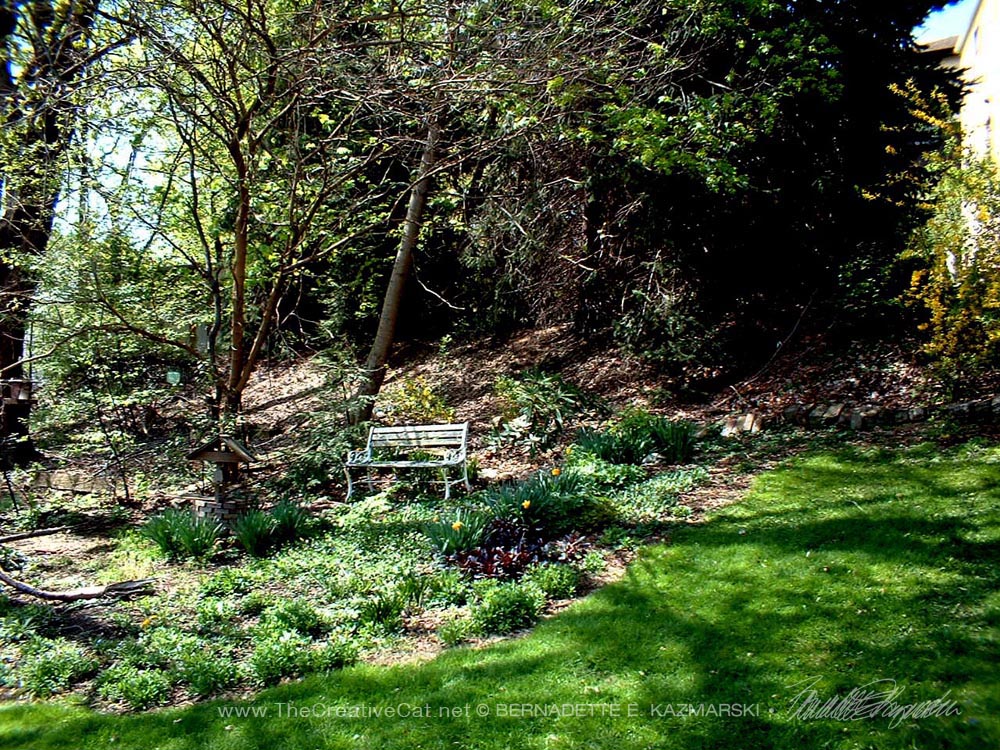
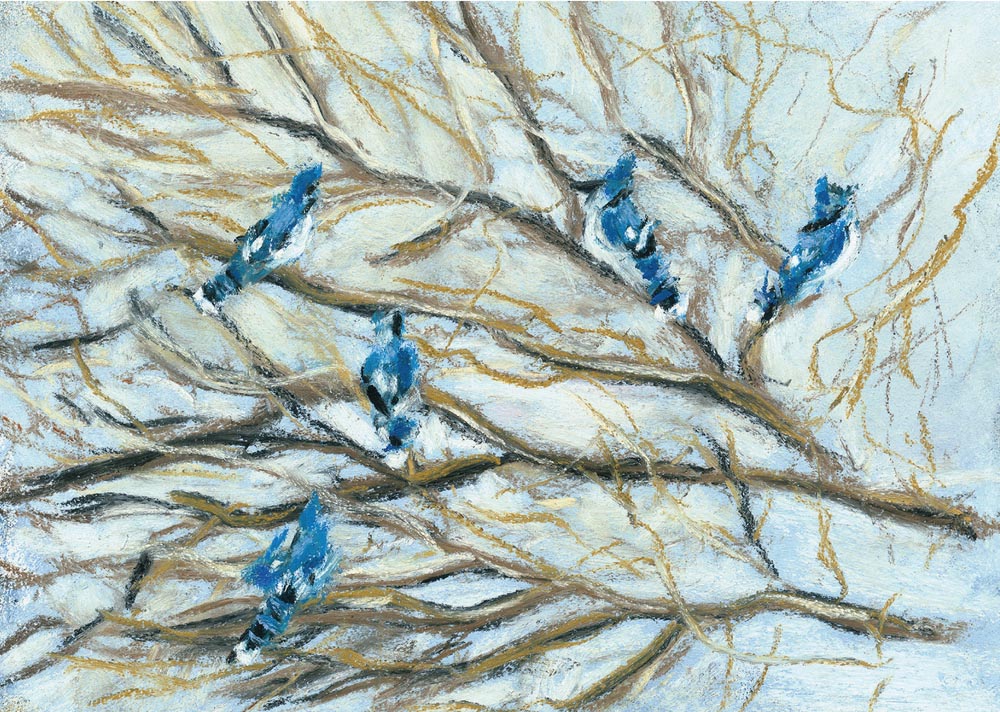
I am inspired by…
I really do photograph, sketch and paint my birds all the time. You can find plenty of posts of my cats watching birds here on The Creative Cat, and also visit my photo blog, “Today”, to see some of my recent photos of birds in my yard and beyond.
Visit the Wildbirds page in my photography gallery to photos of birds, and in my online Marketplace visit the Originals and Prints Wildlife page or the Notecards Nature and Landscapes or Wildlife page to see some of my art inspired by watching the birds at my feeders. I’ve featured the note cards and notepaper series “Eye on the Sparrow” on my Marketplace blog, as well.
This year I had two series of holiday cards inspired by watching the birds in my backyard, “Greetings From Our Backyard Birds” and “Cardinals Brighten a Snowy Day”. Read about these on my Marketplace blog or find these and more in my Etsy shop.
And, unintentionally, you can hear them in the background of a few of the poems I recorded, even though one was recorded in early spring when the windows were still closed: “The Gift of a Morning” and “Wild Apples”.
Also read about my art, photography, poetry and prose inspired by my backyard wildlife habitat:
Art Inspired by My Backyard Wildlife Habitat
Photography Inspired by My Backyard Wildlife Habitat
Poetry Inspired by My Backyard Wildlife Habitat
Prose Inspired by My Backyard Wildlife Habitat
Backyard Wildlife Habitats
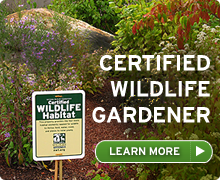
My backyard wildlife habitat was certified through National Wildlife Federation’s program in 2003, and their site is still one of my favorite references for information. Visit and read about it, and begin planning your own and be certified!
. . . . . . .
Read the entire series of introductory articles:
An Introduction to Backyard Wildlife Habitats
What’s in Your Backyard? The First Step in Planning Your Backyard Wildlife Habitat
What Else is in Your Backyard: The Fauna That Fill It
Bringing it All Together: Enhancing and Developing Your Habitat
. . . . . . .
Also read about my art, photography, poetry and prose inspired by my backyard wildlife habitat:
Art Inspired by My Backyard Wildlife Habitat
Photography Inspired by My Backyard Wildlife Habitat
Poetry Inspired by My Backyard Wildlife Habitat
Prose Inspired by My Backyard Wildlife Habitat
Or just read other articles in the category of Your Backyard Wildlife Habitat
All images and text used on this site are copyrighted to Bernadette E. Kazmarski unless otherwise noted and may not be used without my written permission, although links to your site are more than welcome and are shared. Please ask if you are interested in using and image or story in a print or internet publication. If you are interested in purchasing a print of an image or a product including it, check my animal and nature website Portraits of Animals to see if I have it available already. If you don’t find it there, visit Ordering Custom Artwork for more information on a custom greeting card, print or other item. Subscribe to The Creative Cat Preview E-newsletter. © 2022 | www.TheCreativeCat.net | Published by Bernadette E. Kazmarski Weekly schedule of features: Sunday: Essays, Pet Loss, Poetry, The Artist’s Life Monday: Adoptable Cats, TNR & Shelters Tuesday: Rescue Stories Wednesday: Commissioned Portrait or Featured Artwork Thursday: New Merchandise Friday: Book Review, Health and Welfare, Advocacy Saturday: Your Backyard Wildlife Habitat, Living Green With Pets, Creating With Cats And sometimes, I just throw my hands in the air and have fun!

Copyright
Subscribe to my e-newsletter
PORTRAITS OF ANIMALS WEBSITE
FACEBOOK | TWITTER | LINKEDIN | PINTEREST | TUMBLR | INSTAGRAM | YOUTUBE| EMAIL
| PATREON
Subscribe to The Creative Cat on your Kindle
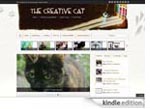

Start with a 14-day free trial. You can cancel at any time during the free trial period. If you enjoy your subscription, do nothing and it will automatically continue at the regular monthly price of 99 cents. Click here to subscribe to The Creative Cat on your Kindle.
© 2017 | www.TheCreativeCat.net | Published by Bernadette E. Kazmarski
—
Weekly schedule of features:
Sunday: Essays, Pet Loss, Poetry, The Artist’s Life
Monday: Adoptable Cats, TNR & Shelters
Tuesday: Rescue Stories
Wednesday: Commissioned Portrait or Featured Artwork
Thursday: New Merchandise
Friday: Book Review, Health and Welfare, Advocacy
Saturday: Your Backyard Wildlife Habitat, Living Green With Pets, Creating With Cats
And sometimes, I just throw my hands in the air and have fun!
—

